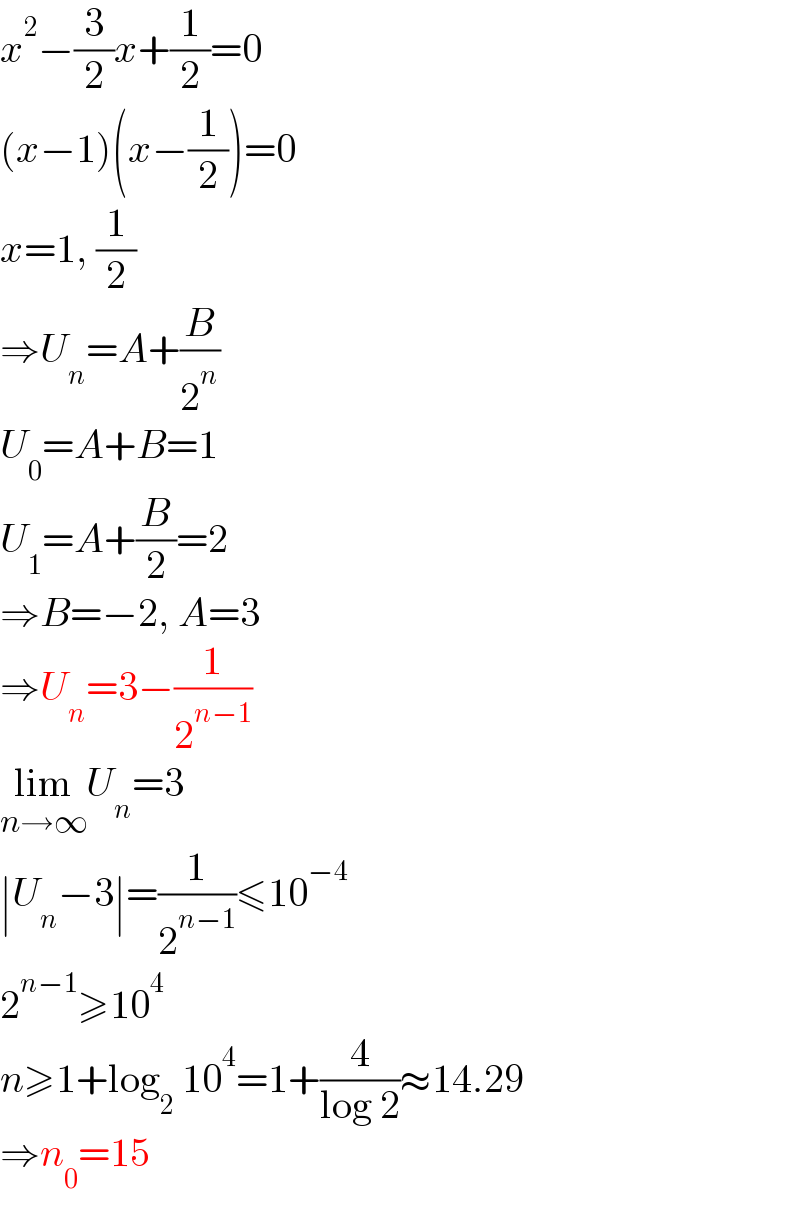
Question and Answers Forum
Question Number 133856 by mathocean1 last updated on 24/Feb/21

Answered by mr W last updated on 25/Feb/21

Commented by mathocean1 last updated on 27/Feb/21

Commented by mr W last updated on 27/Feb/21

Commented by mr W last updated on 27/Feb/21

Commented by mr W last updated on 27/Feb/21
https://math.libretexts.org/Courses/Saint_Mary's_College_Notre_Dame_IN/SMC%3A_MATH_339_-_Discrete_Mathematics_(Rohatgi)/Text/2%3A_Sequences/2.4%3A_Solving_Recurrence_Relations
Commented by mathocean1 last updated on 27/Feb/21

